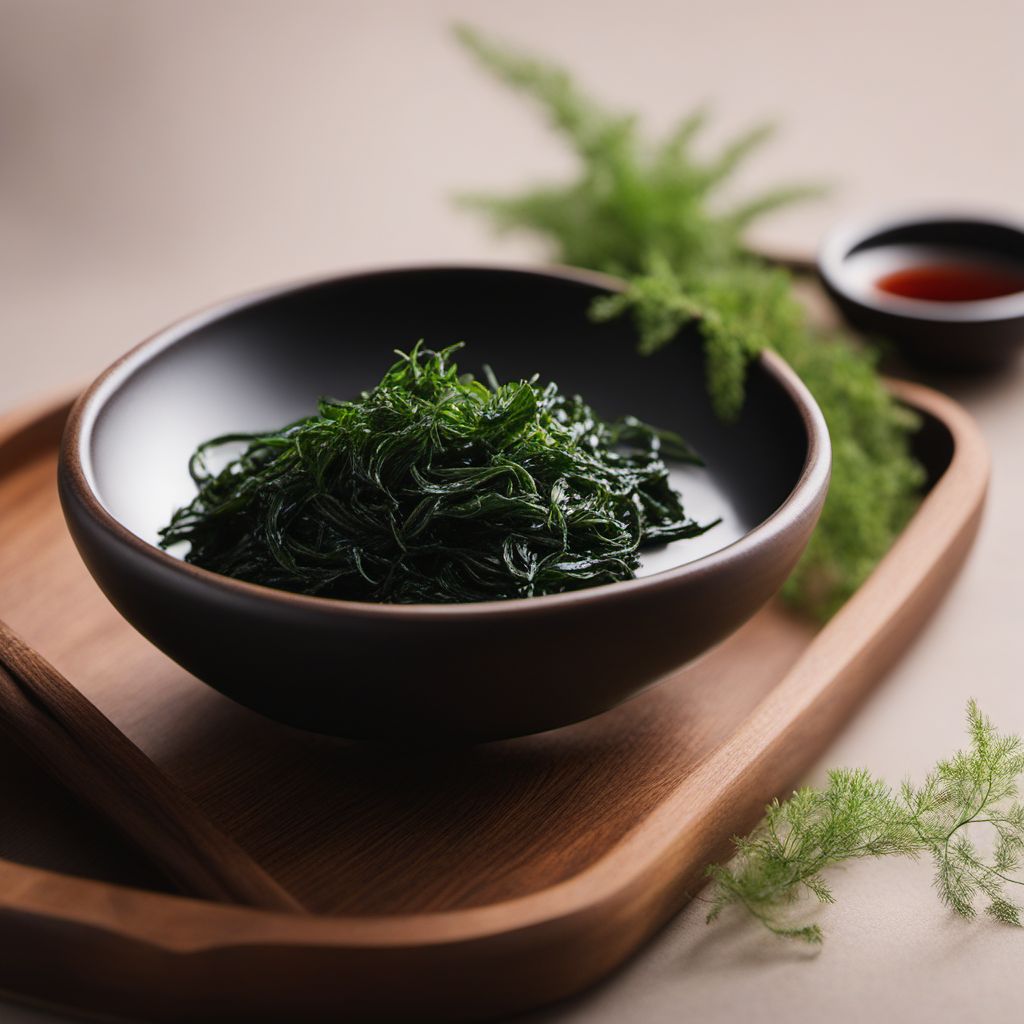
Recipe
Tsukudani - Sweet and Savory Seaweed Condiment
Umami Delight: Tsukudani - A Flavorful Seaweed Infusion
4.5 out of 5
Tsukudani is a traditional Japanese condiment that originated in Tsukuda, Tokyo. It is a sweet and savory seaweed dish that is simmered in soy sauce, mirin, and sugar. Tsukudani is known for its intense umami flavor and is commonly used as a topping for rice, noodles, or enjoyed as a side dish.
Metadata
Preparation time
10 minutes
Cooking time
30 minutes
Total time
40 minutes
Yields
4 servings
Preparation difficulty
Easy
Suitable for
Vegan, Vegetarian, Gluten-free, Dairy-free, Nut-free
Allergens
Soy
Not suitable for
Paleo, Keto, Low-carb, High-protein, Atkins
Ingredients
-
100g (3.5 oz) kombu or wakame seaweed 100g (3.5 oz) kombu or wakame seaweed
-
1 cup (240ml) soy sauce 1 cup (240ml) soy sauce
-
1 cup (240ml) mirin 1 cup (240ml) mirin
-
1/2 cup (100g) granulated sugar 1/2 cup (100g) granulated sugar
-
1 small piece of ginger, sliced (optional) 1 small piece of ginger, sliced (optional)
Nutrition
- Calories (kcal / KJ): 120 kcal / 502 KJ
- Fat (total, saturated): 0g, 0g
- Carbohydrates (total, sugars): 28g, 24g
- Protein: 2g
- Fiber: 1g
- Salt: 6g
Preparation
-
1.Rinse the seaweed under cold water to remove any impurities. Cut the seaweed into small, bite-sized pieces.
-
2.In a saucepan, combine the soy sauce, mirin, sugar, and ginger (if using). Stir until the sugar has dissolved.
-
3.Add the seaweed to the saucepan and bring the mixture to a boil over medium heat.
-
4.Reduce the heat to low and simmer for about 30 minutes, or until the seaweed becomes tender and the sauce thickens.
-
5.Remove the ginger slices (if used) and let the Tsukudani cool to room temperature.
-
6.Transfer the Tsukudani to a clean, airtight container and store it in the refrigerator for up to two weeks.
Treat your ingredients with care...
- Seaweed — Ensure that the seaweed is properly rinsed to remove any sand or debris. Cut it into small pieces for easier cooking and eating.
- Ginger — Adding ginger slices enhances the flavor of the Tsukudani. Adjust the amount according to your preference for a subtle or stronger ginger taste.
Tips & Tricks
- For a spicier kick, add a pinch of red pepper flakes or a few drops of chili oil to the Tsukudani while simmering.
- Experiment with different types of seaweed to discover unique flavors and textures.
- Adjust the sweetness by adding more or less sugar according to your taste preference.
- Use Tsukudani as a topping for sushi rolls or as a filling for omelets for an extra burst of flavor.
- Make a larger batch of Tsukudani and store it in small jars to give as homemade gifts.
Serving advice
Serve Tsukudani as a condiment alongside steamed rice, noodles, or onigiri. It can also be enjoyed as a side dish or used as a flavor enhancer in various Japanese dishes.
Presentation advice
Transfer the Tsukudani to a small, decorative bowl or jar to showcase its glossy appearance. Garnish with a sprinkle of sesame seeds or finely chopped green onions for an added visual appeal.
More recipes...
For Japanese cuisine » Browse all
More Japanese cuisine dishes » Browse all

Maguro nigiri sushi
Tuna Nigiri
Maguro nigiri sushi is a type of sushi that is made with fresh tuna. The tuna is sliced thinly and placed on top of a small ball of sushi rice....

Imagawayaki
Imagawayaki is a traditional Japanese sweet that is made from flour, sugar, and eggs. It is a soft, fluffy pancake that is often filled with sweet...

Hakata ramen
Hakata-style Ramen Noodle Soup
Hakata ramen is a type of Japanese noodle soup that originated in the Hakata district of Fukuoka. It is made with thin, straight noodles and a...






